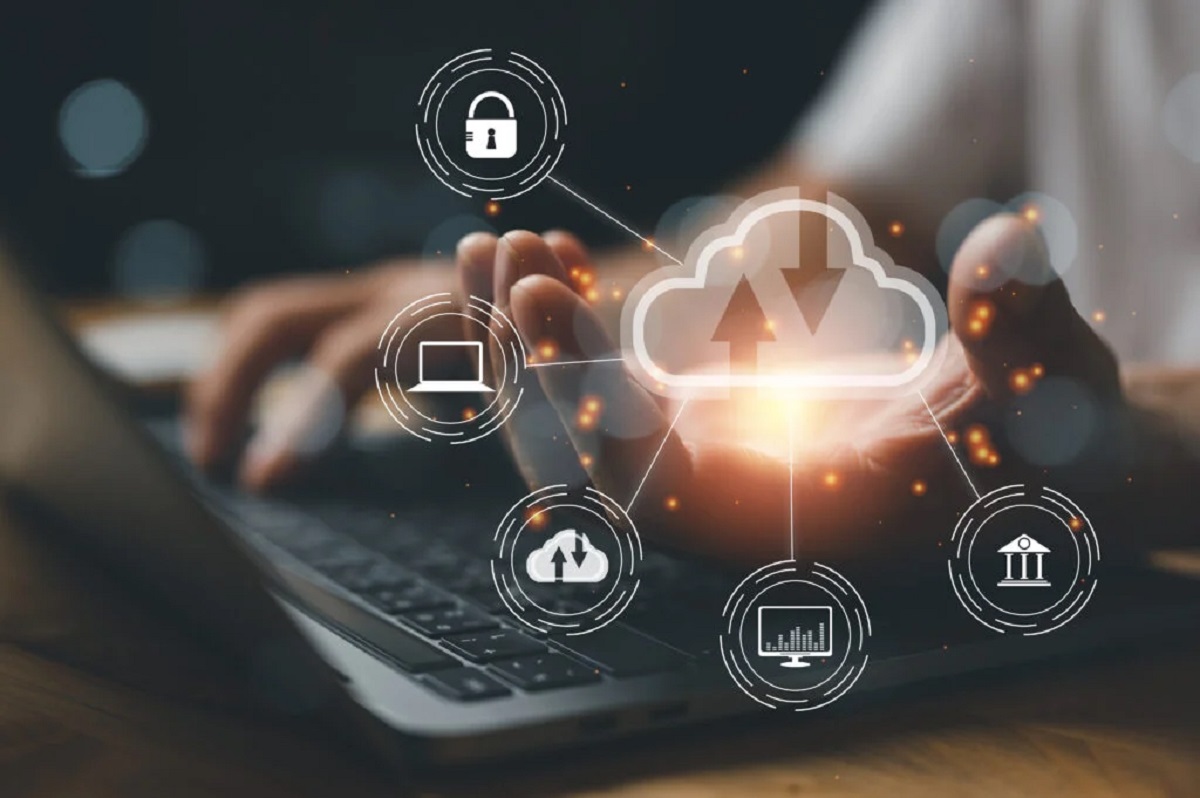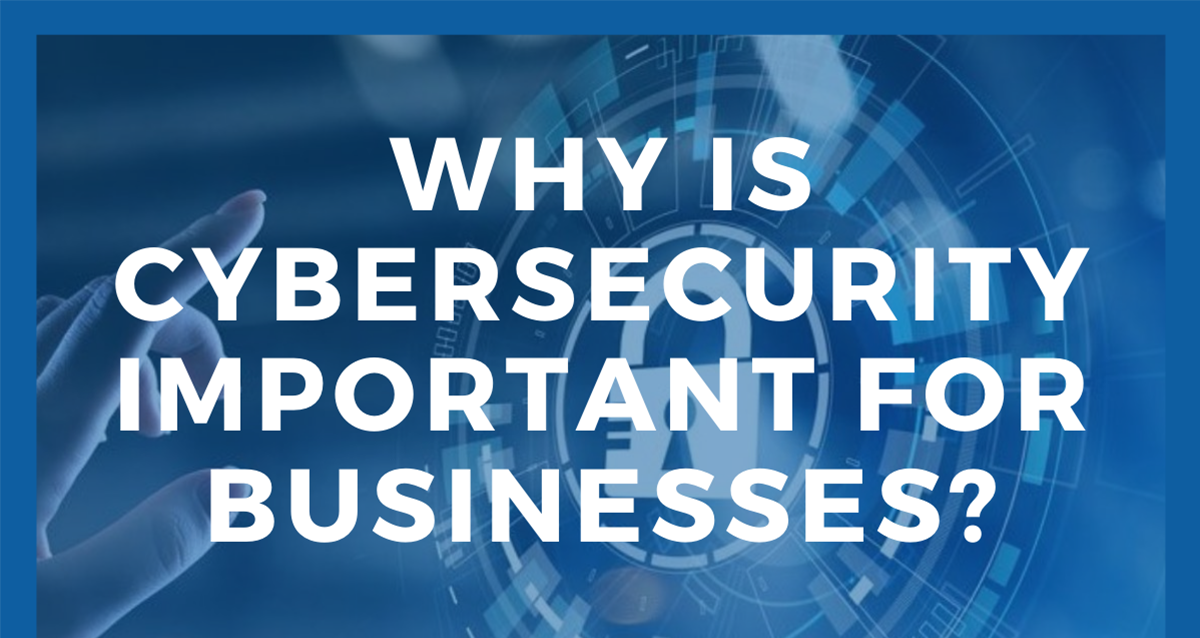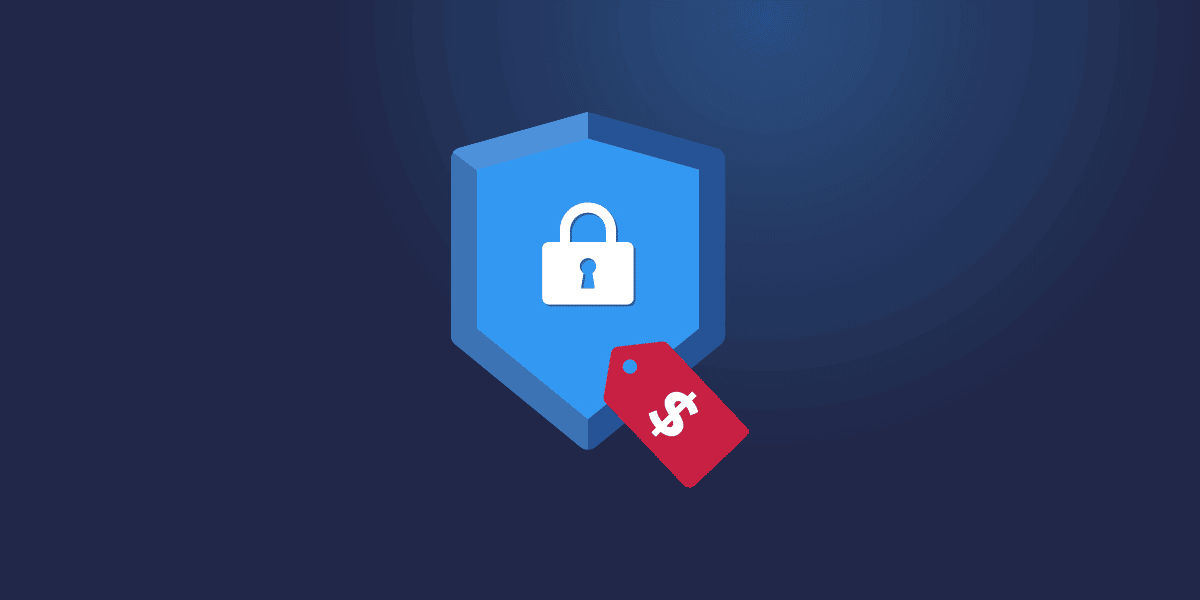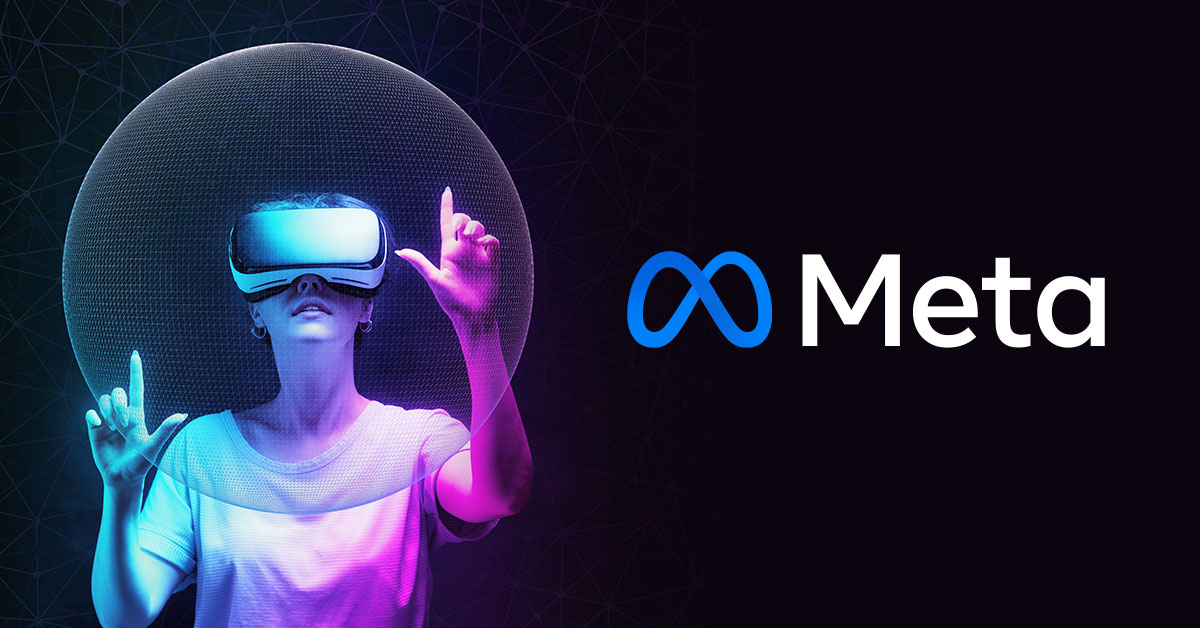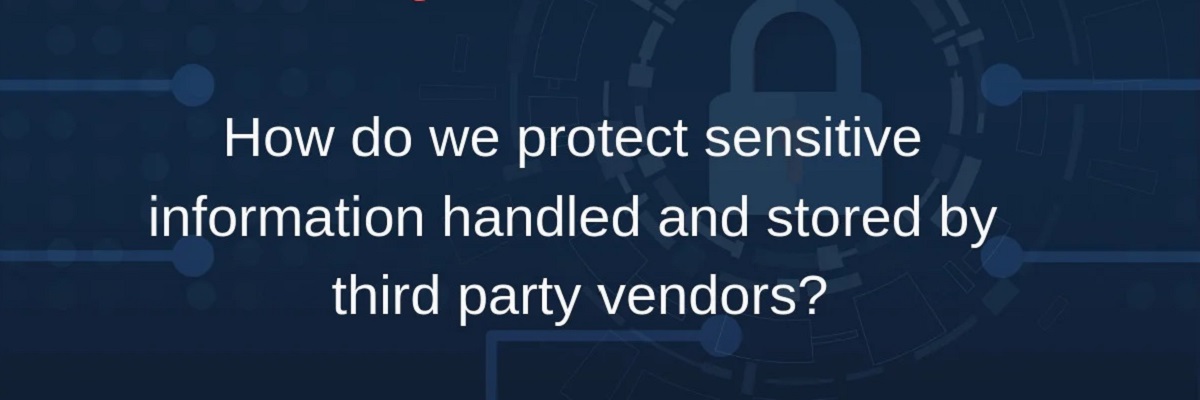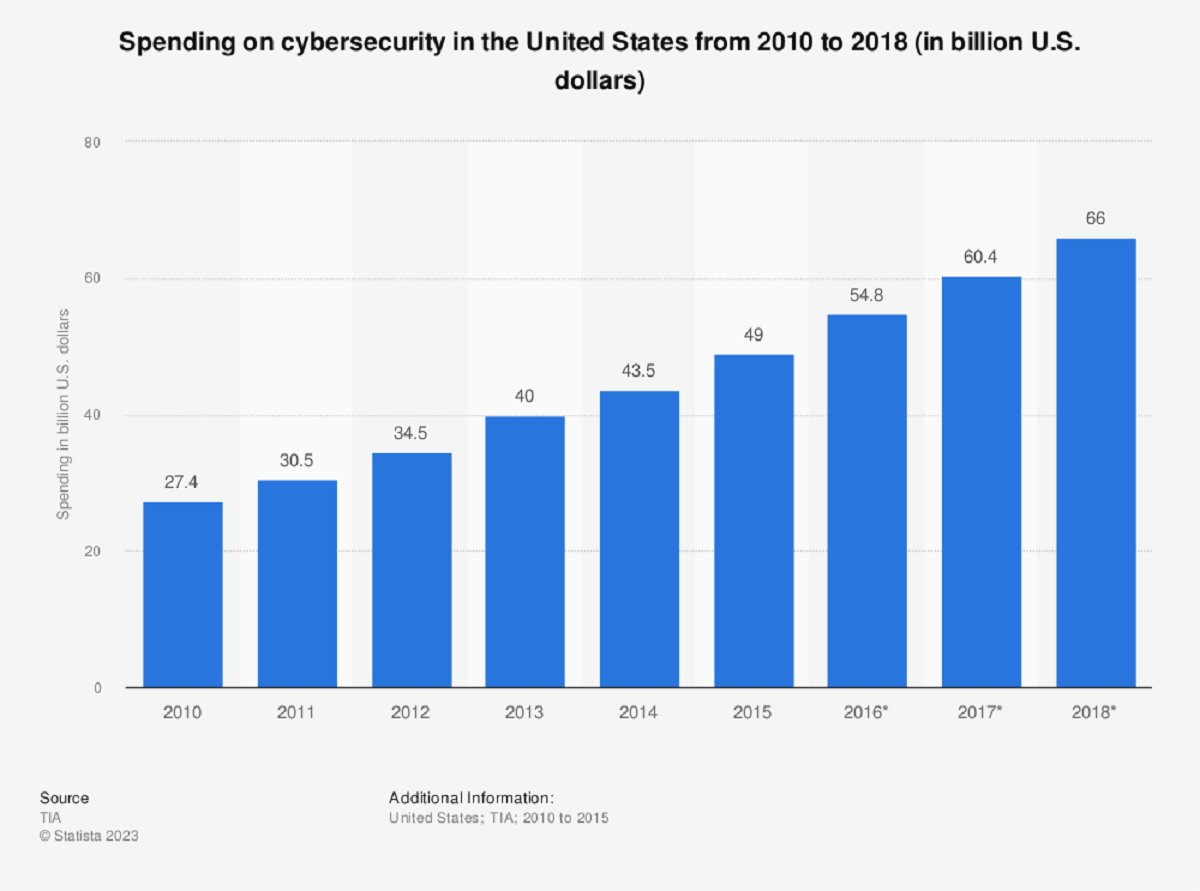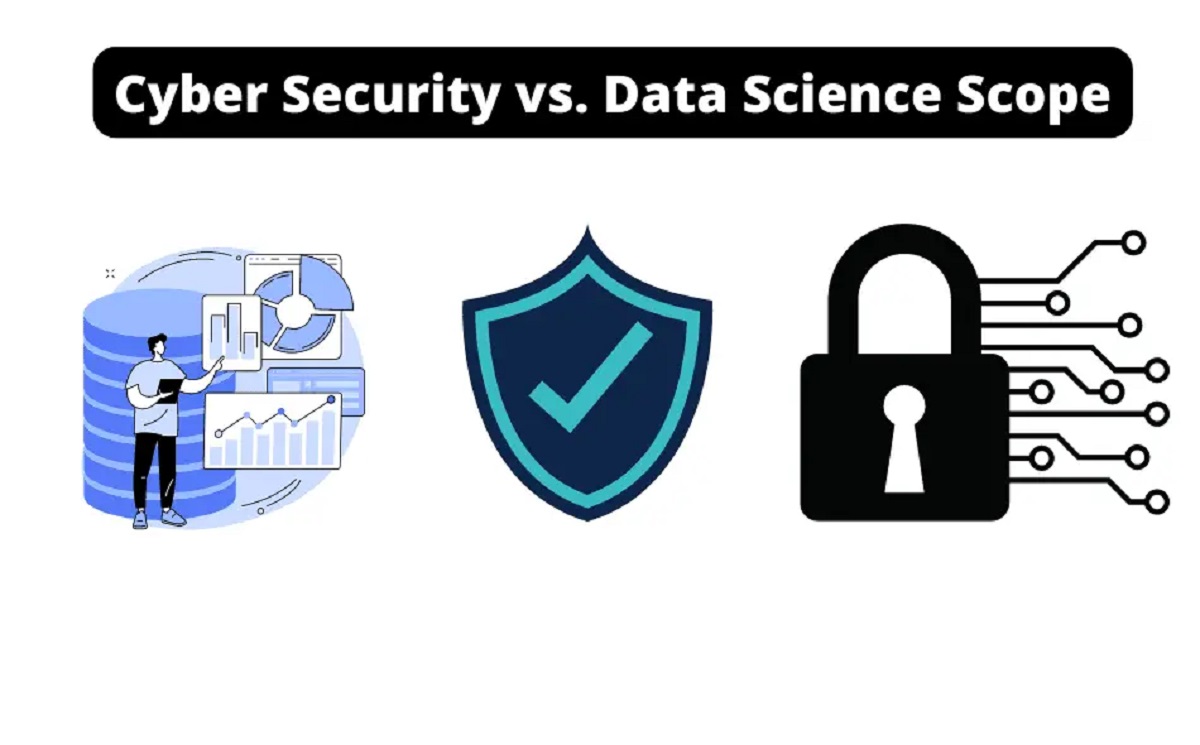Introduction
Welcome to the fast-evolving world of cybersecurity, where protectin the digital realm has become a paramount concern for individuals and organizations alike. As technology continues to advance, privacy and security have become two key pillars in maintaining a safe and secure online environment. In this article, we will explore the intricate relationship between privacy and security within the realm of cybersecurity.
Privacy, in simple terms, refers to the ability to control and safeguard personal information. It involves the protection of sensitive data against unauthorized access, ensuring individuals have autonomy over their own information. Security, on the other hand, focuses on the measures taken to safeguard systems, networks, and data from potential threats or attacks.
While privacy and security are interrelated, they are not the same. Privacy emphasizes the protection of personal data, while security focuses on shielding technology infrastructure from breaches. However, both privacy and security are essential components in maintaining a robust cybersecurity posture.
In an increasingly connected world, the importance of privacy cannot be overstated. Individuals share vast amounts of personal information online, from financial data to personal photographs. Protecting this sensitive information is vital to prevent identity theft, fraud, and other malicious activities. Privacy gives individuals the confidence to engage online while maintaining control over their personal data.
Similarly, security plays a crucial role in cybersecurity. In our digital age, threats such as malware, phishing scams, and data breaches are a constant challenge. Security measures such as firewalls, encryption, and secure authentication protocols help prevent unauthorized access and protect against cyber-attacks.
The relationship between privacy and security within cybersecurity is complex. On one hand, privacy can be seen as a subset of security, as safeguarding personal data is an integral part of ensuring overall system security. On the other hand, security measures implemented to protect systems can have an impact on individual privacy. Striking the right balance between privacy and security is crucial to ensure both the protection of personal information and the overall security of digital systems.
In the following sections, we will delve deeper into the importance of privacy and security within cybersecurity, explore their interplay, discuss best practices, and examine the impact of privacy and security breaches. By gaining a better understanding of these concepts, we can navigate the digital landscape more effectively and take proactive measures to safeguard our information.
Understanding Privacy and Security
In order to grasp the relationship between privacy and security within cybersecurity, it’s essential to have a clear understanding of these two fundamental concepts.
Privacy, as mentioned earlier, involves the protection and control of personal information. It encompasses the ability to decide how and when our personal data is collected, used, stored, and shared. Privacy is a fundamental human right that allows individuals to maintain autonomy and a sense of security in their online activities. It is important to note that privacy is not absolute and may vary depending on legal and cultural contexts.
Security, on the other hand, focuses on protecting systems, networks, and data from potential threats and unauthorized access. It involves a range of technical measures, policies, and procedures put in place to safeguard digital assets. Security measures can include encryption, network firewalls, intrusion detection systems, access controls, and regular software updates. The goal of security is to ensure the confidentiality, integrity, and availability of information, and to prevent unauthorized modification, destruction, or disclosure of data.
Privacy and security share a common goal: protecting sensitive information. However, they approach this goal from different perspectives. While privacy emphasizes individual control over personal data, security focuses on ensuring the overall protection and integrity of systems and networks.
Privacy and security are not mutually exclusive concepts, but rather rely on each other for effective implementation. Privacy without security measures in place leaves personal data vulnerable to unauthorized access and misuse. On the other hand, security measures without consideration for privacy can result in the collection and storage of excessive personal information or the potential for surveillance.
Understanding how privacy and security intersect within the field of cybersecurity is crucial in developing comprehensive strategies to safeguard both personal data and technology infrastructure. It involves finding a balance between allowing individuals to exercise control over their personal information while implementing robust security measures to protect against cyber threats.
In the next section, we will highlight the importance of privacy within cybersecurity and explore how it contributes to building trust and maintaining the confidentiality of personal information.
The Importance of Privacy within Cybersecurity
Privacy is a foundational element of cybersecurity, playing a critical role in maintaining trust and ensuring the confidentiality of personal information. In the digital age, where data is constantly shared, collected, and analyzed, protecting privacy has become more important than ever before.
One of the key reasons why privacy is crucial within cybersecurity is to protect individuals’ personal information from falling into the wrong hands. Unauthorized access to personal data can lead to identity theft, financial fraud, and other malicious activities. By safeguarding privacy, individuals can have more control over their personal information, reducing the risk of potential harm.
Privacy within cybersecurity is also essential for building trust between individuals, businesses, and organizations. When people feel that their personal information is being handled responsibly and ethically, they are more likely to engage and interact online. Trust is a vital component of the digital ecosystem, supporting economic transactions, information sharing, and collaboration.
Furthermore, privacy empowers individuals to make informed choices about how their personal data is used. With the increasing prevalence of data collection and targeted advertising, privacy protection allows individuals to decide what information they want to share, who they want to share it with, and for what purposes. This control not only enhances personal security but also promotes autonomy and individual rights.
In addition, privacy contributes to the preservation of intellectual property and sensitive business information. Maintaining confidentiality in the online world is crucial for businesses to protect their trade secrets, research findings, and proprietary information. Privacy measures, such as encryption and access controls, help prevent unauthorized access and data breaches, safeguarding valuable assets.
Furthermore, privacy is closely linked to regulatory compliance within various sectors. Laws and regulations, such as the General Data Protection Regulation (GDPR) in the European Union, require organizations to implement measures that protect the privacy of individuals’ personal data. Failure to comply with privacy regulations can result in severe penalties and reputational damage.
Ultimately, privacy within cybersecurity is about empowering individuals, protecting sensitive information, building trust, and ensuring that personal data is handled responsibly. By prioritizing privacy, businesses and organizations can demonstrate their commitment to data protection, fostering a secure and trusted digital environment.
In the next section, we will explore the importance of security within cybersecurity and how it complements privacy in safeguarding individuals’ information.
The Importance of Security within Cybersecurity
Security is a critical component of cybersecurity, playing a vital role in protecting individuals, businesses, and organizations from a wide range of cyber threats. In the digital landscape, where technology is pervasive, security measures are essential in maintaining the integrity and availability of systems, networks, and data.
One of the primary reasons why security is important in cybersecurity is to prevent unauthorized access to sensitive information. Cybercriminals are constantly evolving their techniques and strategies to breach security measures and gain access to valuable data. By implementing robust security protocols, such as firewalls, intrusion detection systems, and secure authentication processes, organizations can defend against unauthorized access attempts and protect their valuable assets.
Security within cybersecurity is also crucial for ensuring the integrity and reliability of systems and networks. Without appropriate security measures in place, systems are vulnerable to malware, ransomware, and other malicious software that can disrupt operations, compromise data, and cause significant financial and reputational damage. By implementing security controls, organizations can detect and mitigate potential threats, reducing the risk of system outages and data loss.
Furthermore, security is essential for ensuring the availability of systems and networks. Distributed Denial of Service (DDoS) attacks, for example, can overload networks and render them unavailable for legitimate users. By implementing security measures, such as traffic filtering and incident response plans, organizations can quickly identify and mitigate attacks, minimizing the impact on system availability.
Security also plays a critical role in maintaining the trust and confidence of customers and users. When individuals interact with online platforms, they expect their personal information to be handled securely. By prioritizing security, organizations can demonstrate their commitment to protecting customer data, strengthening relationships and fostering a positive reputation.
Moreover, security within cybersecurity is crucial for compliance with various regulations and industry standards. Depending on the nature of the organization and the data they handle, there may be legal requirements to implement specific security measures. For example, healthcare organizations must adhere to the Health Insurance Portability and Accountability Act (HIPAA) to safeguard patient data. Non-compliance with security regulations can result in severe penalties and legal consequences.
In summary, security is a fundamental aspect of cybersecurity, playing a pivotal role in safeguarding systems, networks, and data from unauthorized access and potential threats. By implementing comprehensive security measures, organizations can protect sensitive information, maintain system integrity, ensure availability, foster trust, and comply with regulatory obligations.
In the next section, we will explore the interplay between privacy and security within the field of cybersecurity.
The Interplay between Privacy and Security
The relationship between privacy and security within the realm of cybersecurity is often seen as a delicate balance, as these two concepts are interconnected and rely on each other for effective implementation. Privacy and security are not mutually exclusive; rather, they work in tandem to create a robust cybersecurity framework.
Privacy and security share a common goal: protecting sensitive information. While privacy focuses on giving individuals control over their personal data, security aims to safeguard systems and data from unauthorized access and potential threats. Privacy can be seen as a subset of security, as the protection of personal data is critical to ensuring overall system security.
However, the implementation of security measures can have an impact on individual privacy. For example, in order to secure systems and networks, organizations may collect and store personal data, such as user logs or IP addresses. Striking the right balance between privacy and security is crucial in order to respect individual rights while ensuring the overall protection of digital systems.
Privacy-enhancing technologies (PETs) play a significant role in the interplay between privacy and security. These technologies enable the implementation of security measures while minimizing the impact on individual privacy. Examples of PETs include encryption, anonymization techniques, differential privacy, and access controls. By utilizing these technologies, organizations can protect sensitive data while guarding against potential security breaches.
Similarly, security measures can enhance privacy by protecting personal data from unauthorized access. For instance, strong authentication methods, like two-factor authentication, can ensure that only authorized individuals have access to sensitive information. Secure communication protocols, such as Transport Layer Security (TLS), help establish a secure and encrypted connection, preventing eavesdropping and maintaining privacy.
The interplay between privacy and security extends beyond technical measures. Policies, regulations, and legal frameworks play a significant role in ensuring the harmonious integration of privacy and security within cybersecurity. Regulations, such as the European Union’s General Data Protection Regulation (GDPR), aim to protect individuals’ privacy rights by requiring organizations to implement appropriate security measures to safeguard personal data. Compliance with these regulations helps create a secure and privacy-respecting environment.
In summary, privacy and security are interconnected and rely on each other in the field of cybersecurity. Finding a balance between individual privacy rights and the need to implement robust security measures is vital. Privacy-enhancing technologies and compliance with regulations play a key role in harmonizing privacy and security within the digital realm.
In the next section, we will discuss the significance of balancing privacy and security in cybersecurity and the potential implications of failing to achieve this delicate balance.
Balancing Privacy and Security in Cybersecurity
One of the greatest challenges in cybersecurity is striking a balance between privacy and security. While both are crucial aspects of protecting sensitive information, they can sometimes seem at odds with each other. However, finding the right equilibrium is essential to ensure the effective and ethical implementation of cybersecurity practices.
When it comes to privacy and security, it’s important to remember that they are not mutually exclusive concepts. Instead, they should be viewed as complementary and interdependent. Privacy is a fundamental right that individuals should have control over, while security measures provide the necessary safeguards to protect personal data and digital systems.
To achieve a balance between privacy and security, organizations and individuals must consider various factors. These include the sensitivity of the data being collected, the level of risk associated with potential threats, and the legal and ethical obligations involved.
Implementing privacy-enhancing technologies (PETs) can play a significant role in balancing privacy and security. PETs, such as encryption and anonymization techniques, allow for the protection of personal data while still enabling necessary security measures. By employing these technologies, organizations can safeguard personal information while minimizing the risk of unauthorized access and breaches.
Privacy by design is another important concept in achieving the balance between privacy and security. This approach involves integrating privacy considerations into the design and implementation of systems and processes from the outset. By proactively considering privacy requirements during the design phase, organizations can build robust security measures that respect individual privacy.
Educating and empowering individuals is also crucial in maintaining this delicate balance. Users should be informed about their privacy rights, the implications of sharing personal information, and the security measures in place to protect their data. By promoting user awareness and providing options for consent and control, organizations can foster trust and allow individuals to make informed decisions regarding their privacy.
Regulations and legal frameworks, such as the General Data Protection Regulation (GDPR), also serve an important role in balancing privacy and security. These regulations provide guidelines for organizations to follow, ensuring that privacy rights are respected while maintaining the necessary security measures. Compliance with these regulations helps create a standardized approach to cybersecurity, benefitting both individuals and organizations.
In summary, achieving a balance between privacy and security in cybersecurity requires a multidimensional approach. Organizations must implement privacy-enhancing technologies, adopt privacy by design principles, educate individuals, and comply with relevant regulations. By considering the interplay between privacy and security in every aspect of cybersecurity, organizations can ensure the protection of personal data while maintaining the integrity and availability of digital systems.
In the next section, we will explore the potential consequences and impact of privacy and security breaches within the cybersecurity landscape.
The Impact of Privacy and Security Breaches
Privacy and security breaches within the cybersecurity landscape can have far-reaching consequences, affecting individuals, organizations, and society as a whole. When personal data is compromised or systems are breached, the impact can be significant and wide-ranging.
One of the primary impacts of privacy and security breaches is the potential for unauthorized access to personal information. This can lead to identity theft, financial fraud, and other forms of cybercrime. Personal data, such as Social Security numbers, credit card information, and login credentials, can be used maliciously to gain financial or personal advantages, causing substantial harm to individuals.
Moreover, privacy and security breaches can result in reputational damage for individuals and organizations. When sensitive information is exposed or compromised, trust in the affected entity can be severely undermined. This loss of trust can have long-lasting consequences, leading to a decline in customer loyalty, decreased business opportunities, and a tarnished reputation in the eyes of stakeholders and the public.
Additionally, privacy and security breaches can have legal and regulatory implications. Many jurisdictions have enacted laws and regulations that mandate the protection of personal information, with severe penalties for non-compliance. Organizations that fail to adequately protect personal data may face hefty fines, legal action, and damage to their brand image. Compliance with privacy and security regulations is not only essential for avoiding legal repercussions but also for maintaining ethical standards and ensuring the protection of individuals’ rights.
Beyond the immediate impacts on individuals and organizations, privacy and security breaches can have broader societal consequences. For instance, the collective loss of personal data can contribute to a culture of fear and distrust in the digital realm. This can hinder the adoption of new technologies, limit innovation, and hamper the potential benefits that can be derived from a connected and data-driven society.
Privacy and security breaches can also lead to the erosion of privacy rights and the normalization of surveillance. In some cases, breaches may result in the collection and aggregation of vast amounts of personal information, further compromising the privacy of individuals. This loss of privacy can infringe upon individuals’ autonomy, limit their freedom of expression, and create an environment of constant surveillance.
In summary, privacy and security breaches have significant impacts, ranging from financial harm and reputational damage to legal consequences and societal implications. It is crucial for individuals, organizations, and policymakers to prioritize privacy and security measures, implement best practices, and establish a culture of proactive cybersecurity to mitigate the risks and minimize the potential impact of breaches.
In the next section, we will explore privacy-enhancing technologies and their role in mitigating privacy and security risks in the cybersecurity landscape.
Privacy Enhancing Technologies within Cybersecurity
Privacy Enhancing Technologies (PETs) play a crucial role in mitigating privacy and security risks within the cybersecurity landscape. These technologies are designed to protect the confidentiality, integrity, and availability of personal data while minimizing the collection and disclosure of sensitive information.
One of the key privacy-enhancing technologies is encryption. Encryption algorithms transform data into an unreadable format, ensuring that only authorized individuals with the appropriate decryption keys can access and decipher the information. Encryption helps protect data in transit and at rest, safeguarding it from unauthorized access and eavesdropping.
Anonymization techniques are another important aspect of privacy-enhancing technologies. Anonymization involves removing personal identifiers from data, making it difficult to identify individuals. Techniques such as data masking, pseudonymization, and k-anonymity help protect privacy by ensuring that sensitive information cannot be directly linked to specific individuals.
Differential privacy is a privacy-enhancing technique that focuses on preserving privacy in aggregate data analysis. It adds noise to aggregated data to protect individual information while still enabling meaningful data analysis. Differential privacy allows organizations and researchers to gather valuable insights while minimizing the risk of identifying specific individuals within the dataset.
Access controls, cryptographic protocols, and secure authentication mechanisms are also critical components of privacy-enhancing technologies. These technologies help ensure that only authorized individuals have access to personal data and digital systems, reducing the risk of unauthorized access and data breaches.
Privacy-enhancing technologies also extend to web browsing and online privacy. Technologies such as virtual private networks (VPNs) can help protect individuals’ privacy by encrypting and routing their internet traffic through secure remote servers, making it difficult for third parties to intercept and track their online activities. Similarly, browser extensions and plug-ins can offer additional privacy protections, such as blocking tracking cookies and preventing online tracking.
It is worth noting that while privacy-enhancing technologies provide valuable safeguards, they are not a one-size-fits-all solution. The effectiveness of these technologies depends on their proper implementation and configuration. Organizations and individuals must carefully assess their specific needs, evaluate the risks they face, and select the most appropriate privacy-enhancing technologies accordingly.
In summary, privacy-enhancing technologies are essential in mitigating privacy and security risks within the cybersecurity landscape. Encryption, anonymization, differential privacy, access controls, and secure authentication mechanisms all contribute to protecting personal data, minimizing the risks of unauthorized access and breach. By implementing these technologies, organizations and individuals can prioritize privacy, maintain compliance with privacy regulations, and foster a secure and trusted digital environment.
In the final section, we will discuss best practices for ensuring privacy and security within cybersecurity.
Best Practices for Privacy and Security in Cybersecurity
Ensuring privacy and security within cybersecurity requires a proactive and comprehensive approach. By following best practices, individuals and organizations can enhance their defenses against potential threats and protect sensitive information. Here are some key practices to consider:
Implement Strong Authentication: Use robust authentication measures, such as multifactor authentication or biometrics, to ensure that only authorized individuals have access to systems and sensitive information.
Encrypt Sensitive Data: Utilize encryption to protect data at rest and in transit. Encryption ensures that even if data is intercepted, it remains unreadable and useless to unauthorized individuals.
Regularly Update Software and Systems: Keep software, operating systems, and security patches up to date to protect against known vulnerabilities. Regular updates help mitigate the risk of exploitation by cybercriminals.
Employ Security Awareness Training: Educate employees and individuals about common cyber threats, phishing scams, and best practices for data protection. Regular training sessions can help build a security-aware culture.
Adopt Privacy by Design: Integrate privacy considerations into the design and development of systems and processes. This includes minimizing the collection of personal data, implementing privacy-enhancing technologies, and obtaining informed consent from individuals.
Regularly Back Up Data: Perform regular backups of important data to ensure its availability in case of a security incident or data loss. Store backups securely, preferably offline or in an encrypted format.
Limit Access Privileges: Grant access to sensitive information on a need-to-know basis. Restrict permissions and regularly review and revoke access privileges for individuals who no longer require access.
Monitor for Suspicious Activity: Implement intrusion detection systems and continuously monitor networks and systems for any suspicious behavior or unusual activity. Promptly investigate and respond to potential security incidents.
Comply with Privacy Regulations: Stay informed about privacy laws and regulations that apply to your organization and industry. Ensure compliance with these regulations to protect individuals’ privacy rights and avoid legal and financial consequences.
Conduct Regular Security Audits: Perform routine security audits to assess vulnerabilities, identify potential weaknesses, and implement necessary security enhancements. Regular audits help maintain a robust cybersecurity posture.
By implementing these best practices, individuals and organizations can strengthen their privacy and security measures, reduce the risk of privacy breaches and security incidents, and foster a safer digital environment for all stakeholders.
With these practices in mind, it is important to remember that cybersecurity is an ongoing process that requires continuous monitoring, adaptation, and improvement. Staying vigilant and proactive is key to mitigating risks and safeguarding privacy and security in the ever-evolving landscape of cybersecurity.
Conclusion
In the fast-paced digital world, the relationship between privacy and security within cybersecurity is of utmost importance. Privacy and security are interconnected and rely on each other for effective implementation. Privacy ensures individuals have control over their personal information, while security measures protect systems, networks, and data from potential threats and unauthorized access.
Privacy is essential for maintaining trust, allowing informed choices, and protecting sensitive information. Security, on the other hand, is critical for safeguarding systems, preventing breaches, and ensuring availability. Balancing privacy and security is crucial for maintaining a robust cybersecurity posture, respecting privacy rights, and complying with regulations.
Privacy-enhancing technologies (PETs) play a significant role in achieving this balance. Encryption, anonymization, and access controls are some of the PETs employed to protect personal data while maintaining necessary security measures. Compliance with privacy regulations, privacy by design principles, and user education also contribute to maintaining privacy and security within the digital realm.
The impacts of privacy and security breaches can be severe, including financial loss, reputational damage, legal consequences, and erosion of privacy rights. Therefore, implementing best practices such as strong authentication, regular software updates, security awareness training, and data backups are crucial for mitigating risks and strengthening privacy and security measures.
In conclusion, maintaining a harmonious relationship between privacy and security is essential in the realm of cybersecurity. By prioritizing privacy, implementing robust security measures, and adhering to best practices, individuals, organizations, and society as a whole can protect sensitive information, build trust, and create a more secure and privacy-respecting digital landscape.







